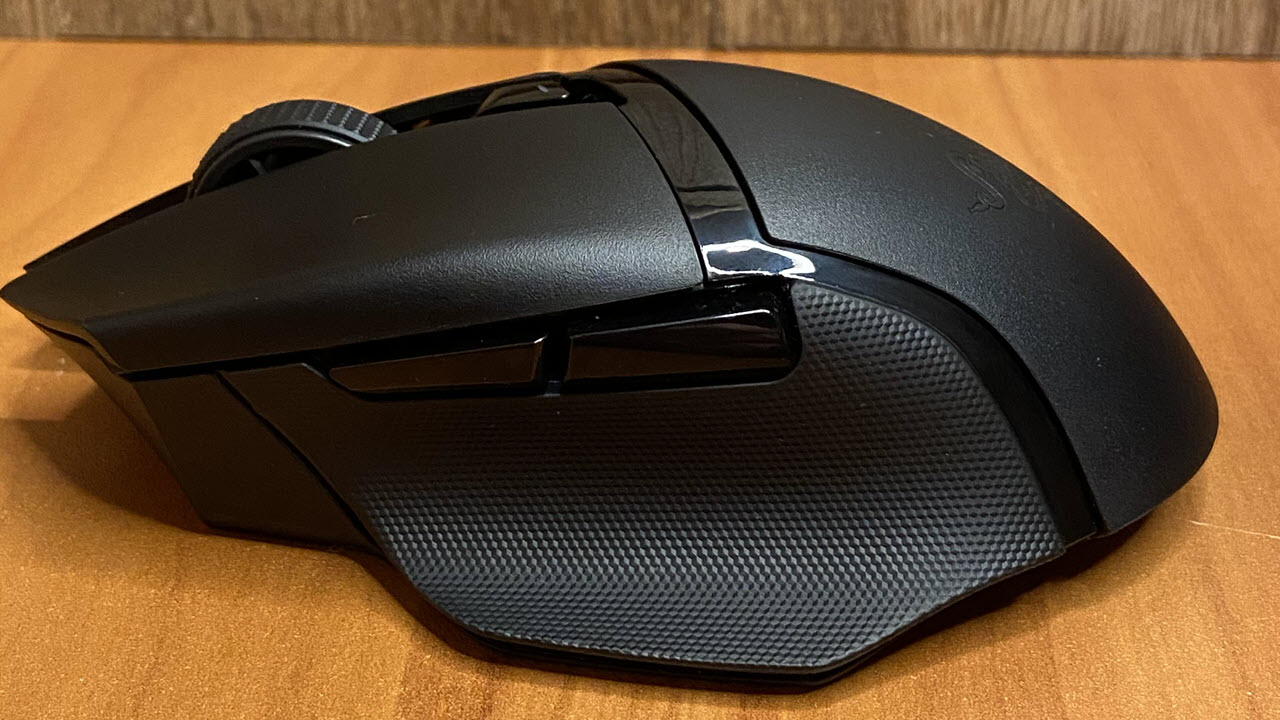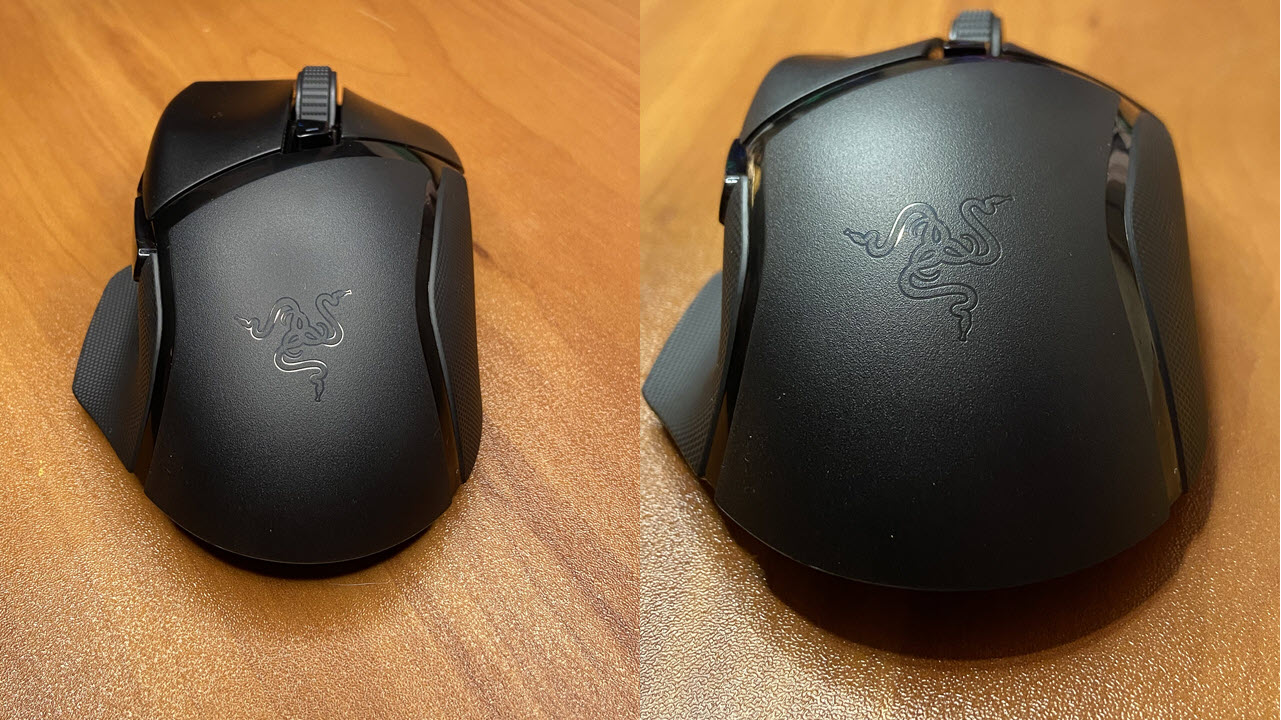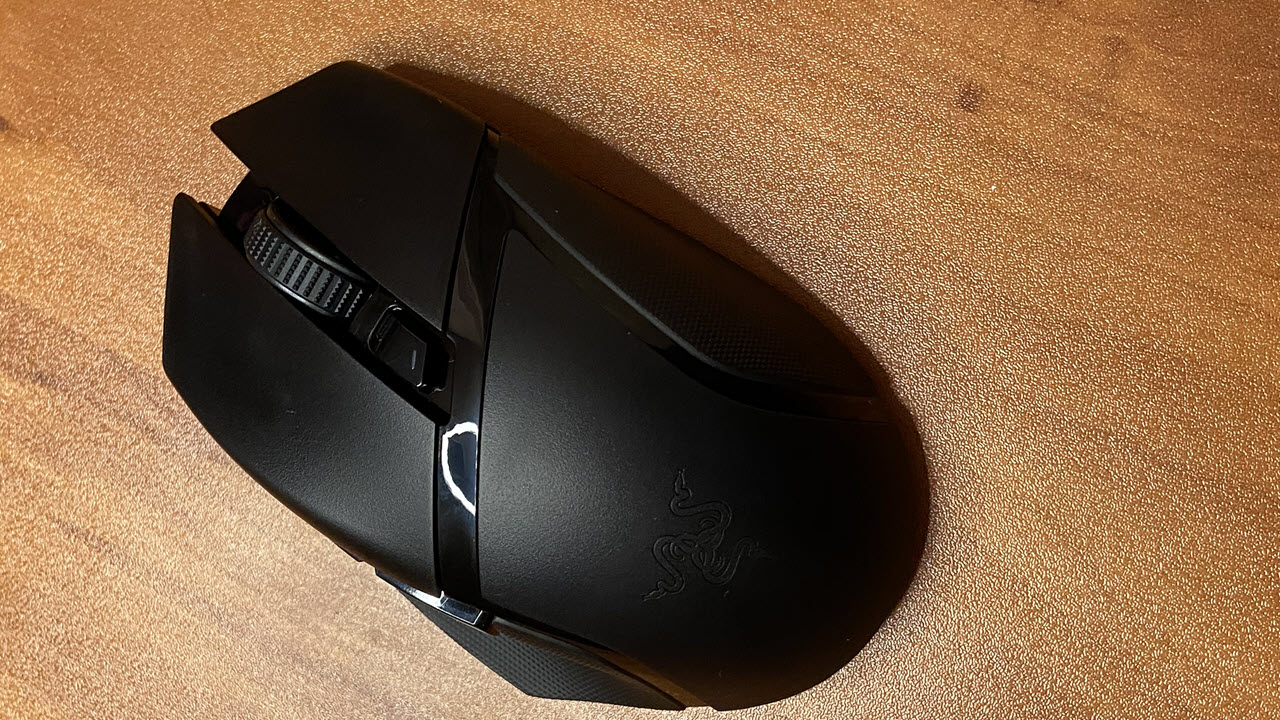Tom's Hardware Verdict
The Basilisk X HyperSpeed proves specs don’t tell the full story by offering nigh identical performance to newer--and more expensive--models.
Pros
- +
Excellent wireless connectivity
- +
Ergonomic design
- +
Strong in-game performance
Cons
- -
Doesn’t support any wired connections
- -
Relies on last-gen Razer technology
- -
AA battery, not rechargeable
Why you can trust Tom's Hardware
Razer’s line of Basilisk mice have changed since it first introduced the Basilisk to win over first-person shooter gamers (FPS) in 2017. Today’s lineup features the Basilisk V2 ($80 at the time of writing) and two attempts at the best wireless mouse, the Basilisk Ultimate ($150) and Basilisk X HyperSpeed ($60), the latter of which is the focus of this review.
The Basilisk X HyperSpeed wireless mouse holds the entry-level spot in the Basilisk line-up, but its comfort and gaming prowess prove that in some cases lower specs can still yield a great value. Casual gamers will be fine with its gaming performance, but serious competitors will struggle to call this the best gaming mouse, due to last-gen technology and a lack of connectivity options.
Razer Basilisk X HyperSpeed Specs
| Sensor Type | Optical |
|---|---|
| Sensor Model | Razer 5G |
| Sensitivity | Up to 16,000 CPI |
| Polling Rates | 125, 500 or 1,000 Hz |
| Programmable Buttons | 6 |
| LED Zones and Colors | None |
| Connectivity | 2.4 GHz via USB Type-A or Bluetooth Low Energy (BLE) |
| Measurements (LxWxH) | 5.11 x 2.36 x 1.65 inches (12.98 x 6 x 4.19 cm) |
| Weight | 2.9 ounces (82.21g) |
Design and Comfort



The Basilisk X HyperSpeed is most defined by what it lacks: the Razer Speedflex cable found in the Basilisk V2, Basilisk Ultimate and DeathAdder V2. Instead, this is a wireless mouse that connects via a 2.4 GHz USB Type-A dongle powered by Razer’s HyperSpeed wireless technology that it claims has better performance than competitive products You can also connect via Bluetooth Low Energy.
That lack of wired support is likely to worry some folks, especially if they fear their Basilisk X HyperSpeed's battery will die when they don't have a backup. But that's unlikely--Razer said that a single AA battery lasts up to 285 hours (HyperSpeed) or 450 hours (Bluetooth) of continuous use (more on that in the Battery Life section). People shouldn't have to worry about switching out the battery often.
Unfortunately, the rest of the Basilisk x HyperSpeed's design is a clear downgrade from the other current Basilisk mice. It only boasts six programmable buttons and features Razer mechanical mouse switches that rated for 50 million clicks, while the optical ones used in the other Basilisk mice have a 70 million click rating. The Basilisk x HyperSpeed also opts for the Razer 5G optical sensor, which supports up to 16,000 CPI, 450 inches per second (IPS) and 40G acceleration. The other current Basilisks use the Razer Focus+ optical sensor with up to 20,000 CPI, 650 IPS and 50G. Plus, there’s no RGB lighting.
Luckily, the Basilisk X HyperSpeed is comfortable to use for extended periods. It measures 5.11 x 2.36 x 1.65 inches (L x W x H) and weighs 2.9 ounces if you exclude the battery. Those are the same dimensions as the Basilisk V2. Since I preferred that model over the DeathAdder V2 (and other mice), it’s not surprising I liked using the Basilisk X HyperSpeed for long periods as well.
The Basilisk X HyperSpeed and Basilisk V2 have similar layouts, but the former lacks one CPI switch, the tilt scroll wheel buttons and button underneath for controlling scroll wheel resistance. Otherwise, they’re nearly identical, both being right-handed mice targeting palm and claw grips with two side buttons and a thumb guard that feature Razer's preferred black-on-black-on-black color scheme.
Get Tom's Hardware's best news and in-depth reviews, straight to your inbox.
Gaming Performance
The Basilisk X HyperSpeed also felt similar to the Basilisk V2 when I played games. That is the dirty little secret when it comes to gaming mouse specs: most people won't notice a significant difference between different models.
On paper, the Basilisk V2 should be superior because its Focus+ sensor can support up to 20,000 CPI to the Basilisk x HyperSpeed's 16,000. In practice, however, the upper limits of a sensor's CPI support don't matter if you use a lower CPI setting. I set every mouse to 1,600 CPI for daily use, so long as the tracking is good at that setting I don't particularly care how much higher the sensitivity can go. It's hard to believe most gamers would push either of these sensors to their limits.
If you don’t have use for a bunch of side buttons, losing five programmable inputs between the Basilisk V2 and the Basilisk X HyperSpeed isn't much of a disappointment. The same goes for Razer Hypershift, which effectively doubles the number of programmable buttons by switching between profiles. I'm perfectly content with the Basilisk X HyperSpeed's available buttons.
The mouse performed well in the titular HyperSpeed 3.4 GHz wireless mode, and I didn’t notice any missing, delayed or otherwise incorrect inputs either. Some people will never be convinced that a wireless mouse can be as reliable as a wired one, but in my experience, the Basilisk X HyperSpeed performed as well as the Basilisk V2 in competitive shooters like CS:GO. Sure, I missed a few (dozen) flicks with the AWP, but that’s not its fault.
I found the Basilisk X HyperSpeed comfortable to use for prolonged gaming sessions. Bonus: I didn’t have to worry about any cable tangling.
Features and Software
In terms of the Basilisk X HyperSpeed's features, you can switch between wireless modes with a, well, switch located on the bottom of the mouse. The CPI switch beneath the scroll wheel also makes it easy to cycle through the sensitivity levels you've set with the Razer Synapse 3 beta companion app.
The Windows software makes it easy to set up to five sensitivity levels, choose the Basilisk x HyperSpeed's polling rate and assign functions to its six programmable buttons. There's enough onboard storage to save the CPI levels and those assigned inputs too, in case you don't feel like installing Razer Synapse on a PC you're using on a temporary basis.
Unlike the rest of the Basilisk lineup--and what seems like darn near every other Razer peripheral--the Basilisk X HyperSpeed doesn't have any RGB lighting.
Battery Life
Razer claims the Basilisk X HyperSpeed can offer up to 285 hours when using the dongle connection (HyperSpeed) or 450 hours if using Bluetooth with a single AA battery. The mouse hasn’t died on me after roughly 30 hours of use.
Razer doesn’t make it easy to check the Basilisk X HyperSpeed’s remaining charge. There’s no indicator on the mouse itself, and Razer’s Synapse software only has an itty-bitty battery icon in the top-right corner of each settings pane. So far, that icon showed me that my review unit’s battery has barely drained after roughly 30 hours of use. I believe most people won’t have to swap out the battery particularly often.
Bottom Line
There's no denying there are many differences between the Basilisk X HyperSpeed and the rest of the Basilisk lineup. It uses Razer's last-gen technologies, is the only member of the lineup that doesn't offer a wired connection and costs significantly less than its counterparts do. (At time of writing the Basilisk X HyperSpeed costs $60; the Basilisk V2 costs $80 and the Basilisk Ultimate is $150 or $170 with the charging dock).
But in my experience, the Basilisk X HyperSpeed didn’t feel lesser in any way to the Basilisk V2. People who rely on some of the Basilisk X HyperSpeed's missing features--a sensitivity higher than 16,000 CPI and more programmable buttons--should opt for the Basilisk V2. The rest, however, will be just fine with the Basilisk X HyperSpeed and save $20 in the process.
MORE: Best Gaming Mice
MORE: Gaming Mice Reviews
MORE: Best RGB Mouse Pads

Nathaniel Mott is a freelance news and features writer for Tom's Hardware US, covering breaking news, security, and the silliest aspects of the tech industry.
-
Countess_C "Cons: -AA battery, not rechargeable"Reply
Isn't that subjective? With a built-in battery you need to plug in a cable to it to recharge or put the mouse on a charging station, and the battery will lose capacity over time and go bad, and then the mouse goes in the trash.
With an AA battery you just replace it with a charged one and you're good to go. I use good low self discharge rechargeable batteries for anything that takes AA or AAA. -
Math Geek i've had this mouse for a few years now and it's worked great for me.Reply
i started with the BT connection and the battery lasted a VERY long time. but it did not like not having line of sight to the BT antenna. we're not talking a long distance here but where i had it put the monitor between them and it dropped connection a lot and otherwise hated me. i had to move it so the mouse could "see" it direcly under the monitor and it worked great. however, BT has a power saving mode i could not turn off that put the mouse to sleep after maybe 15 mins of non-use. problem is it took over 5 seconds for it to wake up upon wiggling it. this got very annoying trying to wake up the pc. that delay got old over time and i started dreading those first seconds after sitting down at my desk. but after maybe a year or so like this i wanted the antenna back where i had it and i was totally over the wake up delay, so i went to 2.4 ghz mode which does not have either of those issues.
in that mode the battery went twice as fast for sure. went from maybe 5 months of battery life to barely more than 2 months. roughly 50% less life. it still works great and i have no desire for a different mouse at all but these have been my experiences with it.
i'm obviously not a pro gamer and don't base my life on spec sheets but this has been a great mouse and i have no regrets buying it those few years ago. think i paid like $45 or so during a black friday sale for it.
